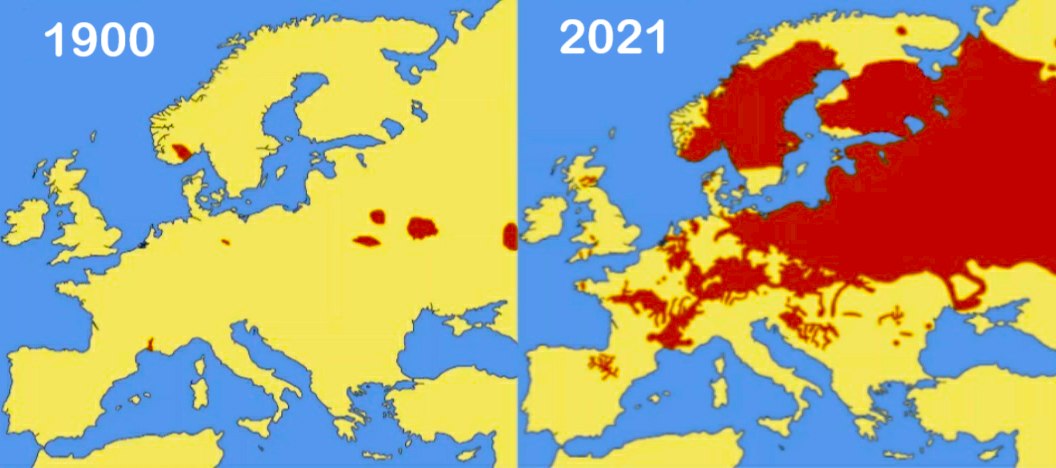
Map by Reddit user vladgrinch
The side-by-side maps showing Europe’s beaver population in 1900 versus 2021 tell one of the most remarkable conservation success stories of the modern era.
What started as tiny red dots scattered across a predominantly yellow landscape has transformed into vast swathes of red, representing a population explosion from near extinction to approximately 1.5 million beavers across the continent.
From 1,200 to 1.5 Million: The Numbers Behind the Recovery
In 1900, the situation looked dire. Fewer than 1,200 Eurasian beavers survived in eight isolated populations across Europe by the early 20th century, a catastrophic decline from historical populations that once numbered in the millions.
Fast forward to 2021, and the transformation is stunning. There is now an estimated population of at least 1.5 million Eurasian beavers, representing more than a thousandfold increase in just over a century.
The population has more than tripled since the first modern estimate in 1998, showing that recovery has accelerated dramatically in recent decades.
The Reintroduction Revolution
This incredible comeback didn’t happen by accident. Re-introduction programmes commenced across Europe beginning in the 1920s, and at least 157 reintroductions in 24 European countries have now taken place.
These systematic efforts, combined with legal protection and habitat restoration, created the foundation for today’s thriving populations.
Countries like the Netherlands showcase this success perfectly. In the Netherlands, beavers were completely extirpated by 1826.
Due to official reintroductions since 1988, beavers are now found in most parts of the country, with the population around 3500 in 2019. Similar stories played out across the continent, from Scotland’s highlands to Germany’s river systems.
Rapid Range Expansion in the 21st Century
The maps reveal particularly dramatic changes in recent decades. Range expansion 2000–2020 has been rapid, with large extensions in western and south-central Europe, southern Russia, and west and central Siberia.
What were once isolated pockets have now merged into continuous populations that can sustain themselves naturally.
A Conservation Success Story for the Ages
Europe’s beaver recovery offers hope and inspiration. While North American beaver populations also crashed in the early 1900s, both continents have seen remarkable recoveries through dedicated conservation efforts.
The European example shows that even species on the brink of extinction can bounce back with the right combination of science, policy, and public support.
The transformation captured in these maps represents more than just numbers; it’s a testament to what’s possible when societies commit to wildlife conservation.
From those scattered red dots in 1900 to the sea of recovery in 2021, Europe’s beavers have quite literally reshaped the landscape, creating wetland habitats that benefit countless other species along the way.
Help us out by sharing this map: